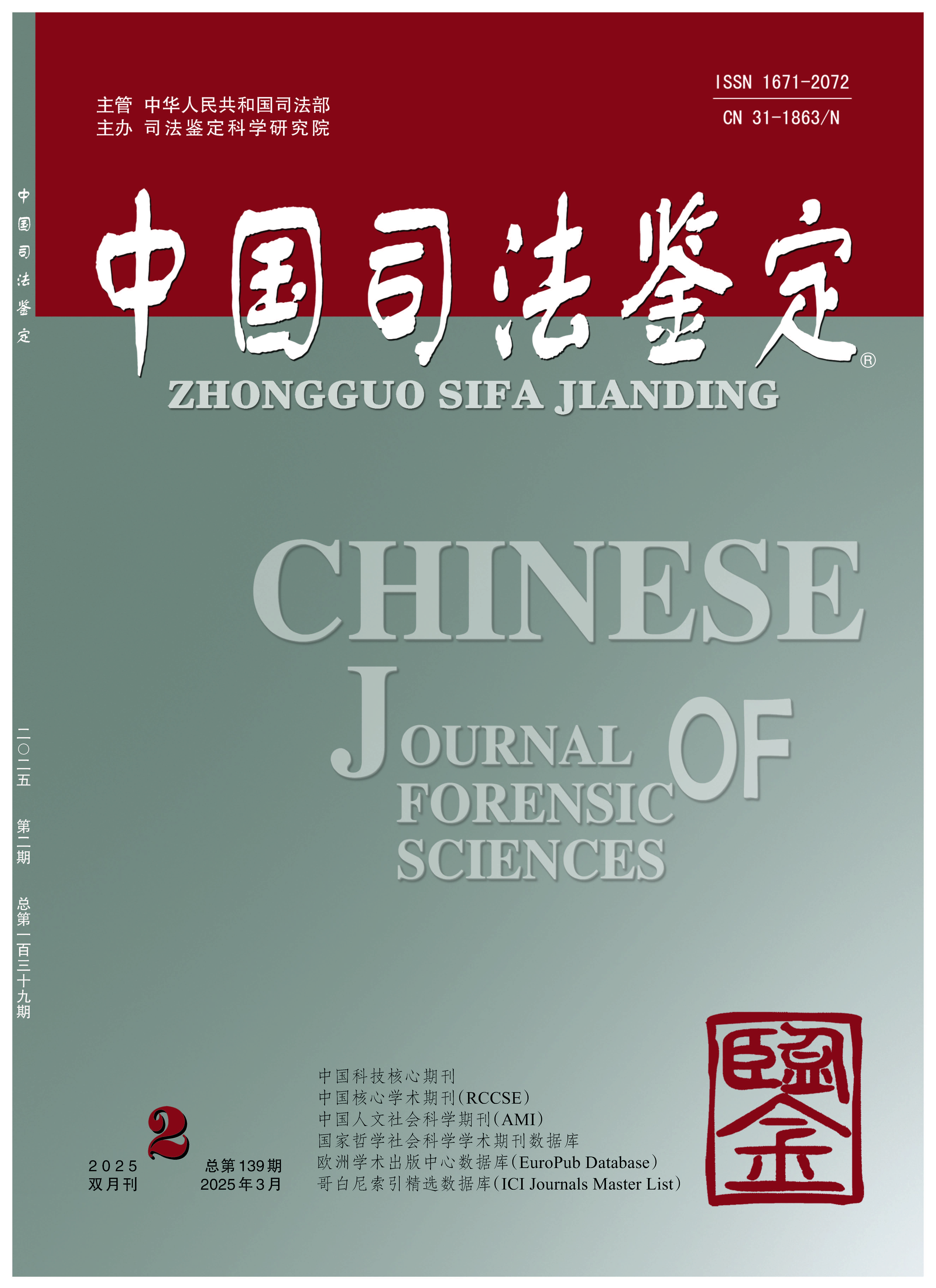|
|
Pharmacokinetic Study of Synthetic Cannabinoid ADB-BUTINACA in Guinea Pigs
ZHANG Jiali, XIANG Ping, WANG Xinying, WANG Xin
2025(2):
47-52.
DOI: 10.3969/j.issn.1671-2072.2025.02.006
Objective To investigate the pharmacokinetics of ADB-BUTINACA in guinea pigs after a single administration. Methods Sixteen guinea pigs were randomly divided into low-dose (0.l mg/kg) and high-dose (0.5 mg/kg) groups, and ADB-BUTINACA were administered intraperitoneally. The concentrations of ADB-BUTINACA and its metabolite ADB-BUTINACA acid were determined in blood samples collected at various time points (0.02, 0.08, 0.16, 0.25, 0.33, 0.5, 0.66, 1, 2, 4, 6, 12, and 24 h), and in urine samples collected from 12 h to 24 h post-dosing using liquid chromatography-tandem mass spectrometry(LC-MS/MS). Pharmacokinetic parameters were calculated using pharmacokinetic software. Results After single doses, ADB-BUTINACA rapidly reached its peak concentration in blood and was quickly eliminated, while the concentration of ADB-BUTINACA acid remained below the limit of quantification. The Tmax values for ADB-BUTINACA in blood were 20.00 min and 23.75 min for the low-dose and high-dose groups, respectively. The Cmax values were 11.42 ng/mL and 21.37 ng/mL, respectively, and the T1/2 values were 33.85 min and 34.14 min, respectively. The metabolite was detected in urine samples collected from 12 h to 24 h post-dosing, while the parent compound was not detected. Conclusion The results of this study indicate that ADB-BUTINACA is rapidly absorbed and eliminated in guinea pigs, with peak blood concentrations occurring approximately 20 min after administration and becoming undetectable after 2 h, suggesting a short detection window. While the detection window of urine can be extended to be 12 h to 24 h. This study provides reference data for toxicological research and forensic identification practices involving ADB-BUTINACA.
References |
Related Articles |
Metrics
|

